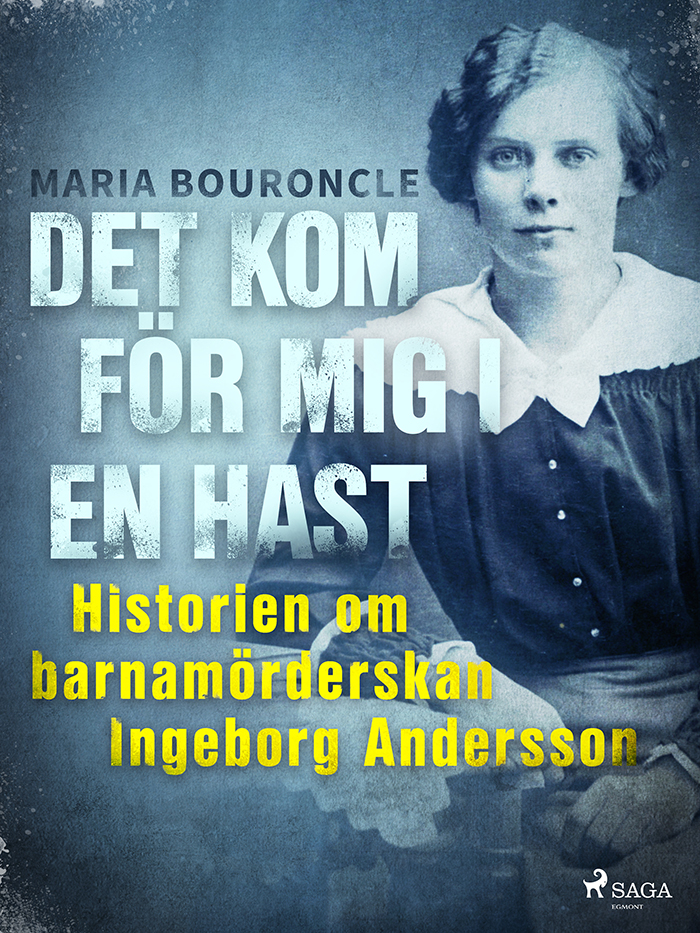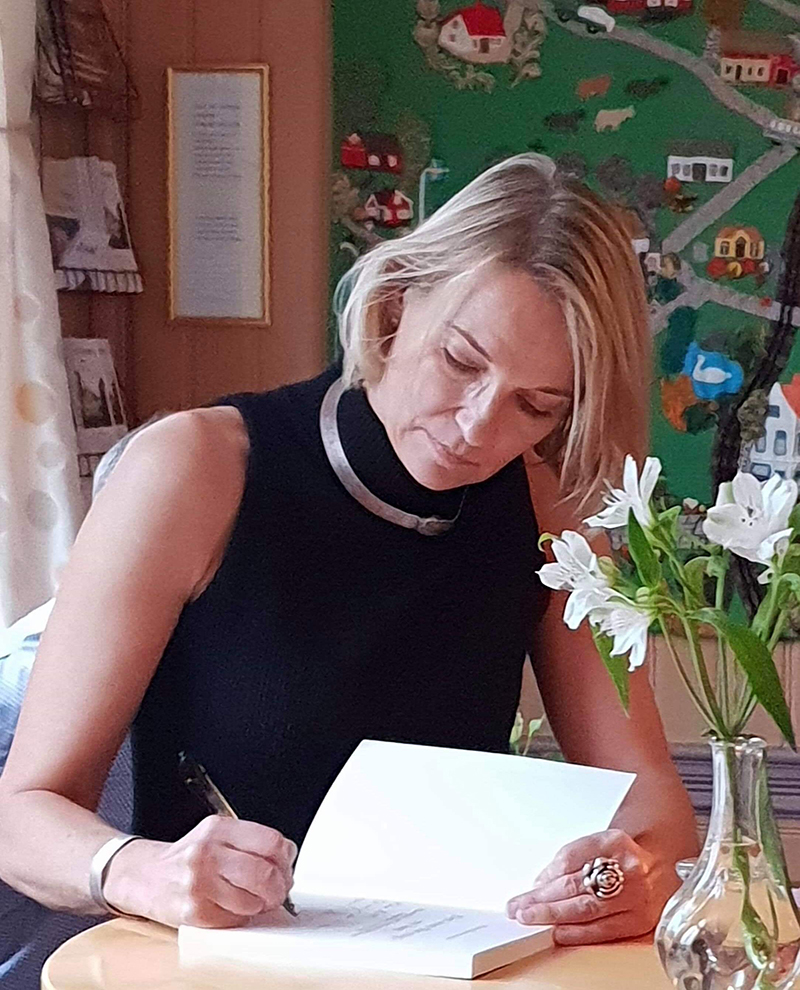Book Review
From the very first page, I was gripped. The book opens with an invitation. To a funeral. For three young children.
-
 Maria Bouroncle:
 Det kom för mig i en hast: Historien om barnamörderskan Ingeborg Andersson 
(It Came to Me on a Whim: The Story of Ingeborg Andersson, Child Murderess)
Maria Bouroncle:
 Det kom för mig i en hast: Historien om barnamörderskan Ingeborg Andersson 
(It Came to Me on a Whim: The Story of Ingeborg Andersson, Child Murderess) -
-
Det kom för mig i en hast: Historien om barnamörderskan Ingeborg Andersson (It Came to Me on a Whim: The Story of Ingeborg Andersson, Child Murderess)
From the very first page, I was gripped. The book opens with an invitation. To a funeral. For three young children. The invitation is signed “Ingeborg and Artur Andersson.” -
 The author, Göteborg based Maria Bouroncle.
The author, Göteborg based Maria Bouroncle. -
-
Having read the blurb on the back cover, I knew what had happened. I knew that it was Ingeborg, the children’s mother, who had taken their lives. What compelled me to read on was not the question “what?” but the question “why?” The answer, such as it is, comes in the form of doctor’s reports and records of court proceedings. Ingeborg herself does not know: “It came to me on a whim.”
The novel is based on true events. Ingeborg was the author’s great aunt, and the murder of the three children was a long-concealed family secret. In this respectful portrayal of her relative, Maria Bouroncle brings the story out into the open and reminds us that we need to have the courage to talk about difficult subjects. -
Ingeborg is arrested and spends several months in the women’s prison at Växjö pending psychiatric reports and sentencing. We see her in her cell, in the prison infirmary and in the classroom. Through brief and extended flashbacks, we also build up a picture of her previous life — both the happy moments and the events that may have made her ill. So ill that on the spur of the moment she drowned her beloved children.
The narrative is interspersed with original letters from Ingeborg to Artur. The letters are touching to read, as Ingeborg from time to time expresses her regret and incomprehension for what she has done. However, I did not detect any bitterness. On the contrary, she frequently mentions how well she is doing in prison. The recurring phrase “Det är så roligt!” (“So nice!”), about everything from sock knitting and medical appointments to the prospect of release, is perhaps most touching of all. But what really troubles Ingeborg is the fact that her dear Artur writes back so rarely and visits her even more rarely. Eventually she comes to realize that her husband cannot forgive her, even though he would like to.
I can see some risk in mixing original older texts with the author’s own words. The style could become fragmented. The newly written passages might feel artificial or anachronistic. But that is not the case here. Maria Bouroncle’s prose struck me as understated but precise, gentle yet poignant. Coupled with events and details, the vocabulary and dialog create a very convincing 1920s feel, recognizable to me from other depictions. Despite the harrowing nature of the story, I enjoyed being transported back in time. -
Meanwhile, the book provides food for thought. How quickly a life can be shattered. How inexplicable the human psyche can be. Is it ever possible to trust anyone, even yourself, absolutely? What is forgivable, and how can you carry on living when something inconceivable has happened?
This book immortalizes the memory of Tor, Efraim and Lucia. They will live on in my memory for a long time too.
By Linnea Dunér -
Originally published in Swedish at www.linneaduner.se
English translation by Tom Ellett
Maria Bouroncle’s website: www.mariabouroncle.com -
-
-
